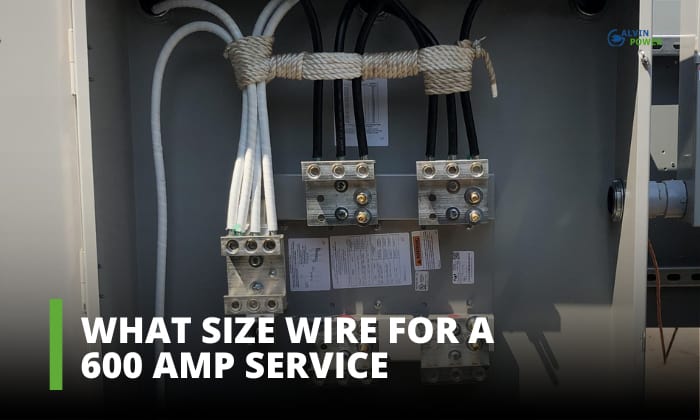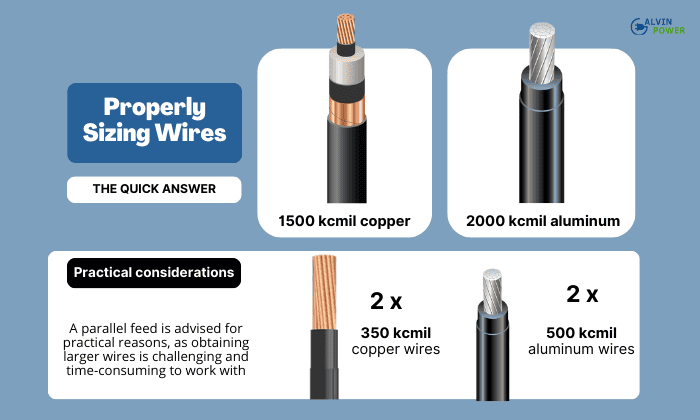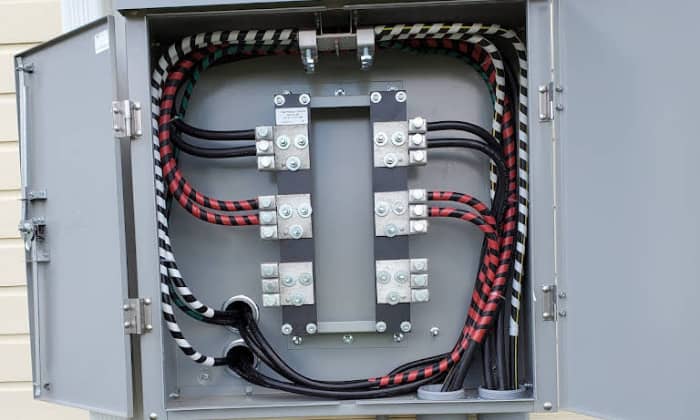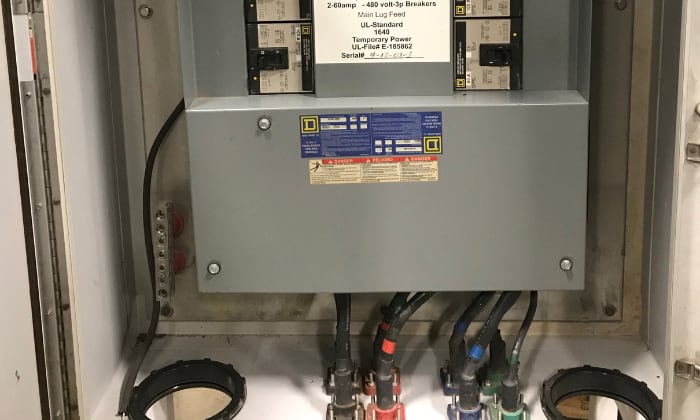The quick answer is 1500 kcmil copper wires or 2000 kcmil aluminum wires. Two 350 kcmil copper wires per phase may be needed as well. You have to look at several key factors when properly sizing wires for a 600 amp residential service.
When answering the question, “what size wire for a 600 amp service?” you have to consider the wire material (copper or aluminum), voltage drop, conductor length, ambient temperature, and ground wire size.
Code requirements like the NEC guidelines also dictate appropriate wire sizing.
Table of Contents
Copper or Aluminum Wire?
You can use either copper or aluminum wires for a 600 amp, 240V service. Copper has lower resistance, so a smaller size handles the same amperage as aluminum. But aluminum is cheaper.
The NEC provides adjustment factors to account for differences in resistance and ampacity. This allows equivalent wire sizing for copper and aluminum conductors.
Again, a 600 amp service wire size of 1500 kcmil copper or 2000 kcmil aluminum will do the job.
And because a parallel feed is recommended for practicality (1500 kcmil and bigger wires are harder to acquire, and working with these sizes is time-consuming) two 350 kcmil copper wires or two 500 kcmil aluminum wires will suffice.
Factors That Affect Wire Size
1. Voltage Drop
Longer wire runs to the electrical panel will experience higher voltage drops. Excess voltage drops can lead to poor equipment performance or shutdowns.
The NEC recommends keeping voltage drop under 3% at the farthest electrical outlet in a branch circuit. For a short run to an adjacent panel, a 1-2% drop is fine.
2. Conductor Length – Bigger Wire for Longer Runs
Building wiring can vary from short panel feeds to 100 foot+ branch circuit runs. Longer wire lengths mean higher resistance and voltage drops.
3. Ambient Temperature Impacts Sizing
Bigger wires can handle higher temperatures and more current.
4. Ground Wire Sizing
The NEC provides ground wire sizing guidance. Ensuring appropriately sized grounding maximizes safety.
Selecting the Appropriate Wire Size for a 600 Amp 3-Phase
When choosing wiring for a 600 amp 3 phase electrical service, you’ll have to properly size conductors and grounding.
Industry best practice recommends using parallel wire runs instead of a single large conductor. This avoids operating wires at excessively high temperatures, which degrades insulation over time.
For the 600 amp application, I would recommend installing two 350 kcmil copper wires per phase. This duplicates the current capacity to a total of 620 amps (310 x 2), providing a safe buffer above the 600 amp rating.
In addition to phase wiring, properly grounding the service is equally important. The National Electrical Code (NEC) mandates ground wire sizing based on the overall amp capacity.
Here’s a table of the requirements for your easier reference:
| Service Type | Phase Conductors | Ground Wire |
| 600A, Single Phase | 2 x 350 kcmil copper per phase | N/A
|
| 600A, 3 Phase | 350 kcmil copper or parallel 400 kcmil aluminum, 2-12″ EMT (or 3″ for long runs) | 1 kcmil copper or 2/0 kcmil aluminum
|
Introduction to the National Electrical Code (NEC)
The National Electrical Code (NEC) is a set of standards for the safe installation of electrical wiring and equipment in the United States. It is part of the National Fire Code series published by the National Fire Protection Association (NFPA). It:
- Provides minimum standards for electrical safety to protect people and property from electrical hazards.
- Is adopted in some form as law in most U.S. states and many local jurisdictions.
- Is revised and published every 3 years, with the most recent version being the 2023 NEC.
Conclusion
When answering the question “What size wire for a 600 amp service?” just remember the recommended guidelines and values mentioned here. Adjust based on whether your service is single-phase or 3-phase.
Also, always consider the variables above when pinpointing the exact wire size that will be suitable for your specific requirements.
Read next:

I am Andrew Wright. With 8 years of experience designing, installing, and maintaining electrical power systems. I love my job, and I have always wanted to offer others the necessary help so they can take care of their houses.




